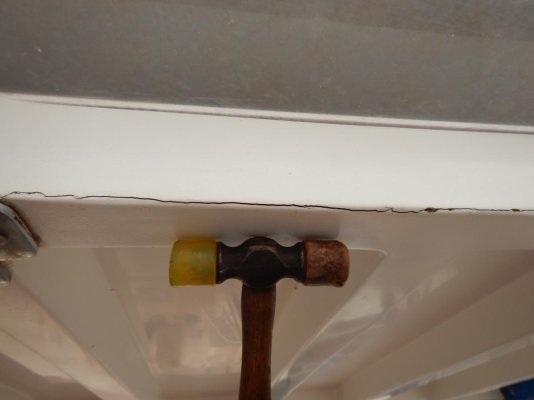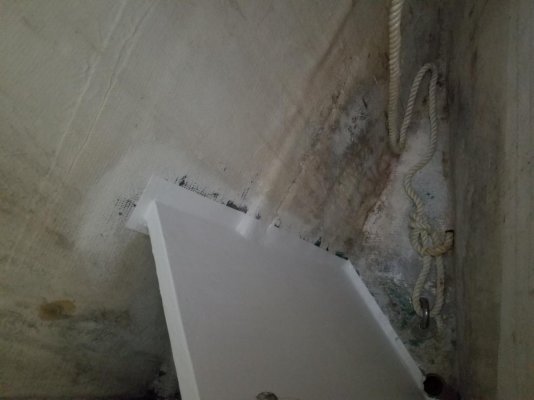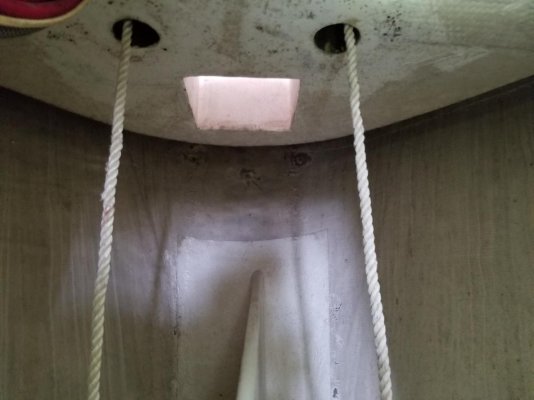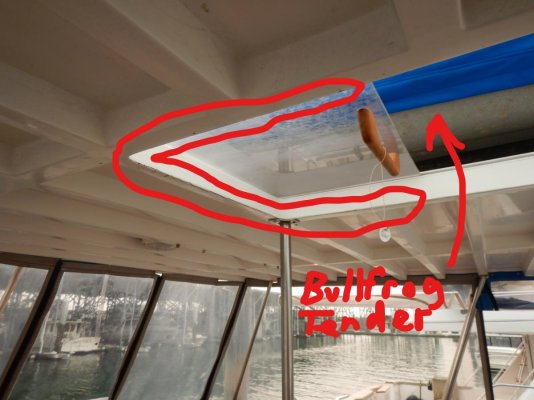Lepke,
Do you mix the 404 in the epoxy? I use West GFlex for about 95% of my epoxy projects, fill, screwholes, deep dings in the gel coat. However, by it self, it's hard to sand and smooth for a coat of gel coat. It has a brownish tint to it and takes several layers of gel coat to cover. To make it easier I use a product called Evercoat Formula 27, a toothpaste consistency light filler that is solid white and really easy to sand, and then gel coat over that.
Was thinking, perhaps the 404 (which is white) mixed in the epoxy might work better? Comments?
BTW, I've also tried adding a white pigment to the epoxy but doesn't work real well. Still hard to sand, but requires fewer gel coats.
404 in epoxy is a very light tan. You can mix 404 anywhere from a little to putty-like. For small batches I use a drill and a small paint mixer. I found for mixing color in epoxy, you need more color than in poly. West epoxy with 404 seems to be immune to UV in cases where I left the epoxy exposed to sunlight for a couple years. I have vacuum sanding tools and don't find sanding epoxy noticeably different. And I probably use much coarser grit than most people. I usually start with 40.
A somewhat recent experience, I'm in my 70s now, I hired a house deck fiberglasser (son of a friend). I have an old, large wood boat with plywood over the original planked deck. (Not a good idea to hire a house anything to work on a boat) But I let him do part of reglassing the deck. When I do fiberglass over decks, mostly on commercial boats, I do an overlap so no hull flexing causes cracks where they joined. I didn't supervise and came back to find butt joints.
I use to be a fisherman and I go out in big waves in the PNW and my hull flexes. In big waves, if you have your eye near the deck on the stern and look towards the bow, you can see the main deck flex about a foot. All the butt joints near midships cracked. As a temporary fix I ground out the cracks, mixed West epoxy and 404, and filled. Meaning to come back and install an overlap patch. But I didn't get to it for a couple years and in the meantime managed to be in some waves larger than the ones the made the original cracks. But all my fixed joints held and didn't crack. If I hadn't been sold on 404, I would be now.
The boat came with poly fiberglass and cloth decks and cabin tops. To remove the old glass, I picked up a corner near the stem and ripped the whole deck off, the foc'sle, the sides and stern in one continuous piece. Just cutting the waste to a manageable size as I went down the deck. About a 30 minute job, plus clean up, no power tools, on an 83' boat, by an old man. So much for poly holding quality. And I did the same many times, the same way, when I had a yard, redoing decks done by some poly yard. Poly doesn't stick good to anything, including itself.






